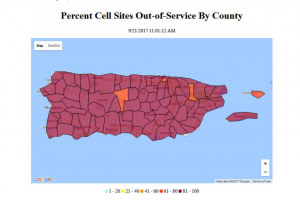During the past month, the Americas have been hit by a significant number of natural disasters. Hurricanes, earthquakes and floods have left a trail of devastation throughout North America and the Caribbean. If climatologists are proved correct, the world will likely experience an increasing number of extreme weather events in future.
Recently, I experienced one of disasters — I was in Miami when Hurricane Irma struck Florida. Within the broader context, Irma blowing through Miami was relatively minor, as the death toll and damage was not enormous. Although Miami did not receive Irma’s full force it still had winds with gusts recorded at 99 mph (around 160 kph).
Public authorities believed that Harvey took a big toll in Texas because there were insufficient warnings. Not wishing to repeat the mistake, Florida authorities went into overdrive with extensive information about the storm’s path and dire warnings about the potential impact. It was almost overwhelming.
In preparation for the storm, friends and the news were all talking about Zello, an app that turns the mobile phone into a walkie-talkie radio. The app relies on a data connection – either cellular or WiFi. It would have been handy only in the case that mobile network is down, but access to WiFi remained. However, without power and with minimal cellular network coverage, it was not of much use. Electrical power was off, all through the storm and for two days afterwards. Full mobile network coverage did not return to normal until 36 hours after electricity was restored.
Before the storm arrived, house windows were covered with plywood or shutters to prevent glass breakage. Houses felt like war bunkers with no power, TV or internet access. Some people told me that they dug out old battery operated transistor radios and that was their only form of communication with the outside world.
Two days after Irma passed through Miami, it was reported that all major carriers claimed to have between 70% – 90% coverage in the state of Florida. However, this average is slightly misleading. As in areas such as Miami Beach, the coverage was almost zero or minimal, meaning no data access or, at best, only GPRS. This remained the best available connectivity until electrical power was restored.
The lack of anything beyond GSM led me to wonder what will happen when operators shut down 2G network as planned. In the USA and in most LATAM countries, the 2G networks are still the most robust. But 2G frequencies are planned to be re-farmed. This is good for the development of higher speed data provision, but could leave users more vulnerable during any future extreme weather situations.
Mobile network antenna sites depend on that same electric power source of the area which it serves. In the case of Mexico’s recent earthquake, the network was saturated beyond normal peak hour usage, meaning SMS was one of the few communication options that remained open.
Besides lack of data access, continuing battery power was the other big issue. Smartphone batteries typically don’t last for more than 10 hours of active usage. External power banks are not always available. So I had my mobile phone fully charged, and a small power bank. I wasn’t expecting that electricity would be out for more than three days. There was no way to obtain power in the neighborhood. All major buildings have their own back-up generators, but these were providing essential power only – for example for lighting and elevators. We ended up using a car to charge our mobile devices.
On September 21st, a day after Maria hit Puerto Rico and a couple of days after the most recent Mexican earthquake, one of the most popular messenger applications in LATAM, Whatsapp, experienced an outage in several regions across the globe. Puerto Rico authorities reported that 95% of the sites were out of service. My Puerto Rican friends reported that they have not heard from their friends and family for two days as a consequence.
Puerto Rico Federal Communication Commission (FCC) Wireless Service Status Chart

Source FCC
In this 5G era, new solutions should be available and implemented, so urban areas do not become isolated when natural disasters strike and electricity is cut. Telecommunication companies and regulators should collaborate to provide a faster way to reestablish wire services, especially in emerging countries, so it can help people stay connected throughout the recovery path.
Finally my conclusion from this experience is not to take technology for granted. All technology depends on electricity and if it is restricted for a long period of time, like in similar or worse natural disasters – then the advance technology we rely on, quickly becomes useless.

